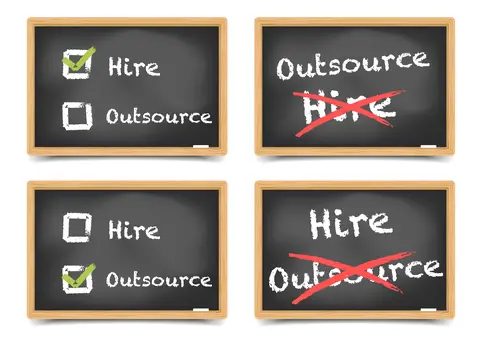 The job market is heating up and according to a recent NFIB report, there was a 15% uptick in the number of small businesses that planned to increase employment. With that said, there are a growing number of firms that are one-person operations. They don’t have employees, yet they seem to thrive.
The job market is heating up and according to a recent NFIB report, there was a 15% uptick in the number of small businesses that planned to increase employment. With that said, there are a growing number of firms that are one-person operations. They don’t have employees, yet they seem to thrive.
The Wall Street Journal recently reported that the number of one-person manufacturers has soared in recent years, with an estimated 350,000 such firms in 2014. The following focuses on one-person companies, but the reasons can apply as well to small employer firms thinking of hiring this year.
Reasons for remaining one-person companies
There are a number of good reasons to remain an owner-run business:
- Cost. Wages, salary, and commissions are only a tip of the cost iceberg for having employees. There are also payroll taxes, workers compensation and unemployment insurance, and fringe benefits such as medical coverage and retirement plans. MIT estimates that it costs between 1.25 and 1.4 times a base salary to pay for an employee (e.g., a $40,000 a year employee can cost $50,000 to $56,000 a year).
- Personal preference. Many entrepreneurs prefer to do what they do best, which is making a product or providing a service. They don’t want to become managers of other people.
- Technology. It’s now possible to do many things alone, with the help of technology.
- Avoiding government-imposed responsibilities. Bringing on employees triggers a basket of employer responsibilities beyond payroll taxes, workers compensation, and unemployment insurance. There are various federal laws, some of which apply regardless of the number of employees, e.g., Fair Labor Standards Act (FSLA) rules for minimum wages and overtime pay, and some of which apply after having more than a set number on staff (e.g., Family and Medical Leave Act obligations start with having 50 or more employees). In addition to federal laws, there may be state and local laws that must be followed.
- Outsourcing. Depending on the type of business, it’s possible to use independent contractors or outside companies to handle various aspects of a company’s work. This arrangement can be used on an as-needed basis rather than providing a long-term commitment to an employee.
Reasons for hiring
While the reasons for not hiring are many, there are also a number of compelling reasons to take on employees:
- Business growth. While a one-person firm is sustainable, and many have been in operation for years, it’s just not doable for those that want to expand. There aren’t enough hours in the day for a single individual to increase production beyond a certain point, even with the help of technology.
- Satisfying customer needs. If demand increases, the only way to meet it may be to hire employees to share the workload. The failure to meet demand can adversely affect a company’s continued success.
- Continuity. Having employees gives a business continuity, with these individuals trained and able to do their work, in contrast to using independent contractors who may come and go.
- Owner’s work-life balance. If an owner wants to take vacation or maintain reasonable hours, it’s difficult if not impossible to do it as a one-person firm.
Conclusion
With 2017 just beginning and you’re a one-person shop or have only a few employees, it’s a good time to reevaluate your business plan. Determine whether hiring is or is not in the picture for you this year.


